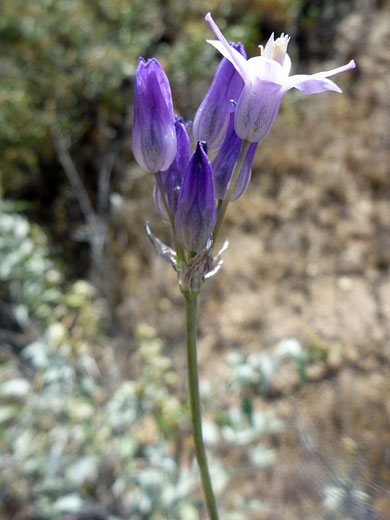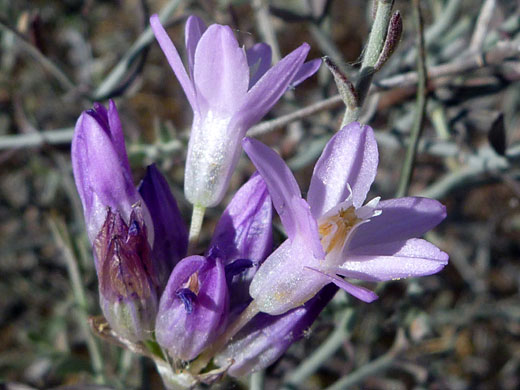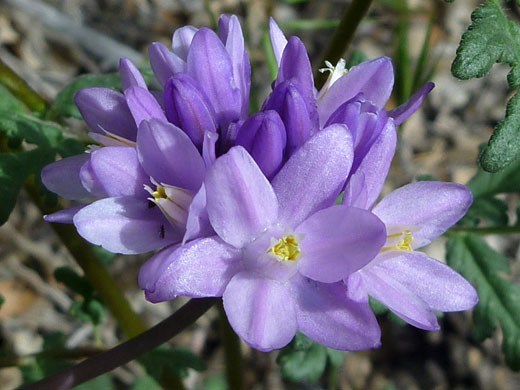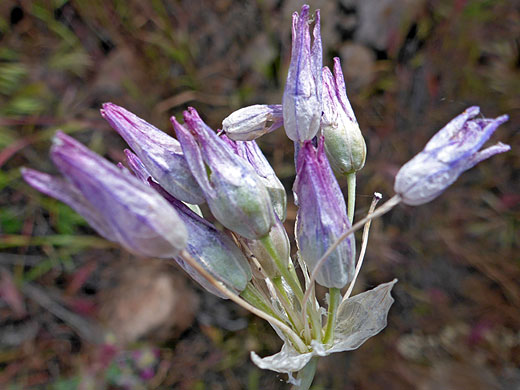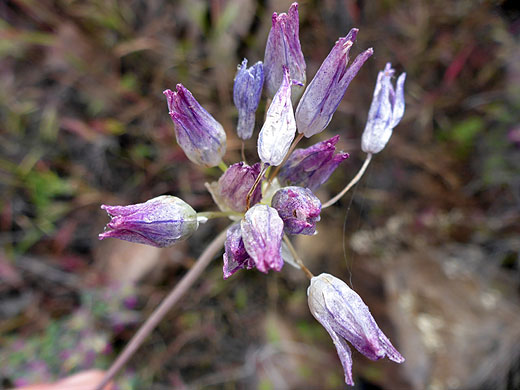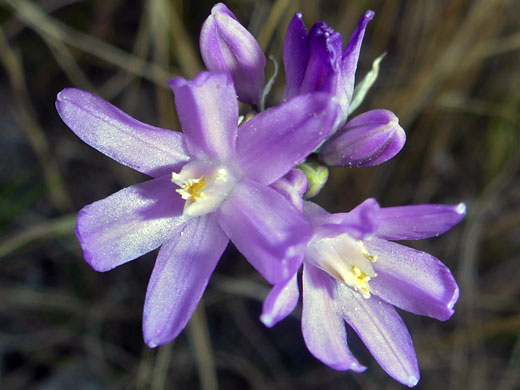
Pale purple flowers of dichelostemma capitatum (blue dicks) along the trail to Gaviota Peak in Gaviota State Park
Common names:
Blue dicks, purplehead, Indian hyacinth
Family:
Scientific name:
Dichelostemma capitatum
Main flower color:
Range:
West Oregon, most of California, desert areas of Nevada, Arizona, Utah and New Mexico
Height:
Up to 2 feet
Habitat:
Varied; coastline, grassland, open woodland
Leaves:
Thin, linear, up to 15 inches long, 2 or 3 per plant
Season:
February to June
The thin, grass-like leaves of dichelostemma capitatum grow only around the base, from where a single, unbranched stalk rises up to 2 feet, topped by a tight, rounded cluster (2 to 15) of small, pinkish purple or bluish purple flowers (rarely white). Flowers open to reveal a whitish center with six stamens, three of which are larger than the others. The petals curve inward slightly along the outer edges.
Two varieties are recognized: capitatum, with dark purple bracts and six or more flower heads, and pauciflorum, where the bracts are whitish or light purple and flowers number fewer than six. The former is found across much of California, north into Oregon, the latter in all desert areas of the West. The plant grows from an underground tuber and can remain dormant for several years, appearing only when conditions are suitable. It is often found in fire damaged areas.
Two varieties are recognized: capitatum, with dark purple bracts and six or more flower heads, and pauciflorum, where the bracts are whitish or light purple and flowers number fewer than six. The former is found across much of California, north into Oregon, the latter in all desert areas of the West. The plant grows from an underground tuber and can remain dormant for several years, appearing only when conditions are suitable. It is often found in fire damaged areas.
All Contents © Copyright The American Southwest | Comments and Questions | Contribute | Site Map




